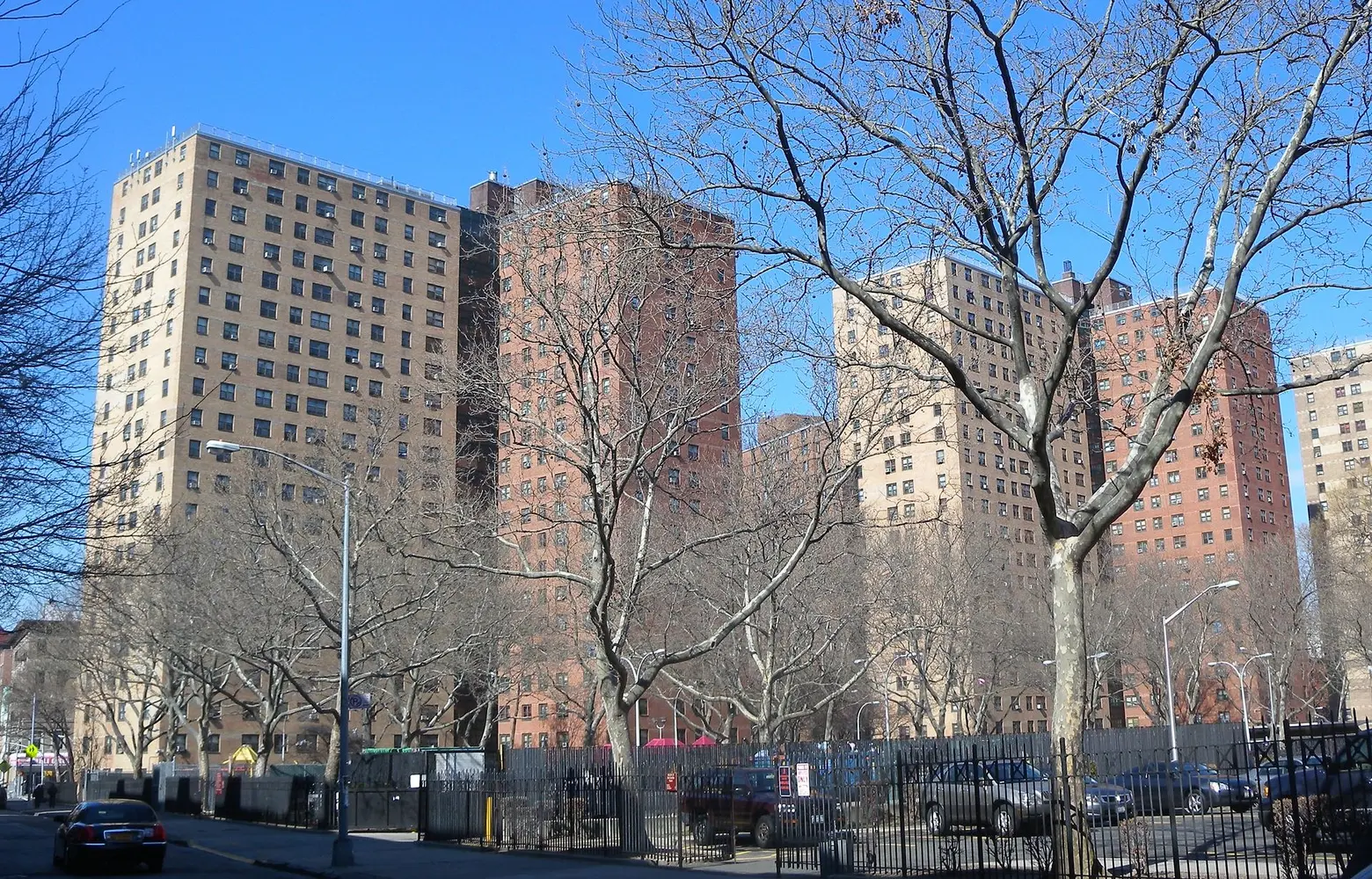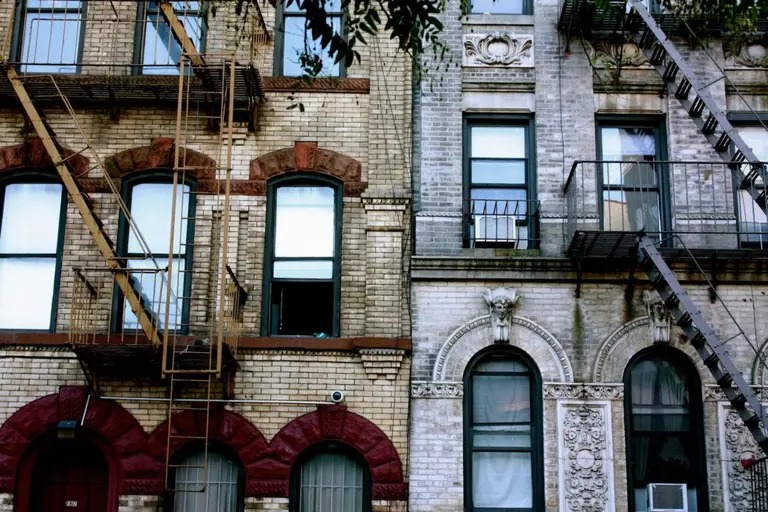5,000 NYCHA apartments are sitting vacant, new report finds

Drew Hamilton Houses in Harlem. Photo by Jim.henderson on Wikimedia
Despite the city’s current housing and homelessness crisis, about 5,000 public housing apartments are sitting vacant. According to a report published Wednesday by Bart Schwartz, the federal monitor overseeing the New York City Housing Authority (NYCHA), a special team assembled by the agency to expedite turning over vacant apartments has actually slowed down the process, leaving apartments in need of repairs empty for months, as The City reported. The number of empty NYCHA apartments has increased from just about 490 in 2021 to nearly 5,000 as of last month, even though roughly 240,000 New Yorkers are on the waitlist for an apartment.
Previously, the turning over of vacant NYCHA apartments was handled by staff at each housing development. In 2019, after an investigation by the U.S. Department of Housing and Urban Development (HUD) found the agency lied and covered up its mismanagement regarding lead paint and broken boilers, the city agreed to pay $2 billion over the next 10 years to address safety and health issues and a federal monitor was appointed.
In early 2022, as the number of vacant public housing apartments started to increase, NYCHA created a new specialized team to manage the turning over of empty units: the Operational Analysis and Contract Management (OACM) team.
The monitor conducted over 75 interviews with NYCHA staff to gather their experience dealing with OACM. Schwartz’s observations and interviews with staff members revealed “nepotism, lack of supervision of skilled trades staff, and instances where resources are not managed properly” within the specialized team, according to the report.
The report also cited various cases of miscommunication between local development staff and OACM, leading to prolonged turnover times.
“The COO deployed OACM as a specialized group to improve turnover speed, but ultimately it was not successful,” Schwartz wrote in the report. “The shift resulted in confusion and frustration from development staff. In some cases, development management would initiate work orders to advance the turnover of these apartments only to have OACM come in to take control of an apartment and then have it sit vacant with no work occurring for months.”
In August 2022, when it was clear that OACM had failed to address the problem, NYCHA returned the management of vacant units to local developments. Unfortunately, the team’s inefficiency had further exacerbated the issue, with a NYCHA executive admitting to the monitor that it would take an extra 12 to 18 months to work through the backlog of turnover apartments, according to The City.
In January 2023, the city’s Committee on Public Housing held a hearing to examine the causes of increased vacancies within NYCHA properties. When questioned, NYCHA officials claimed that some of the vacant units were used to temporarily house residents while lead paint was removed from their homes.
The agency also said that another contributing factor was a policy that held open apartments that were set to be modernized through the RAD/PACT program, an initiative to renovate NYCHA properties. However, of the more than 3,000 apartments that were vacant at the end of 2022, only 390 were part of RAD/PACT.
During a City Council hearing last November, NYCHA Chief Operating Officer Eva Trimble said the vacancies could be attributed to the removal of lead paint in hundreds of apartments, which she said could add 130 days to the turnover process.
Trimble also blamed the poor condition of many NYCHA properties due to “decades of insufficient federal funding,” and added “NYCHA apartments required extensive health and safety work once vacated due to their age and often deteriorated conditions,” according to the City.
It hasn’t been a great month for the agency. Earlier this month, 70 NYCHA workers were charged with bribery and extortion in what was the largest single-day bribery takedown in the history of the Justice Department. According to the charges, the workers demanded kickbacks by requiring contractors to pay upfront to obtain contracts, or, they required payment after the contractor finished the work and needed an employee to sign off on the job so they could receive their pay from the authority.
RELATED:
Interested in similar content?
Leave a reply
Your email address will not be published.





























NYCHA is the crooked led by the corrupt.
[…] at the federal, state and city level. Building and apartment conditions remain dire, yet 5,000 units in NYCHA sit vacant while the agency promotes […]